Stroll through the bustling streets of Asakusa in Tokyo, where the ancient art of Mizuhiki crafting weaves a tapestry of tradition and creativity.
Discover the secrets behind this intricate Japanese craft, from its delicate history to the skilled techniques passed down through generations.
As the gentle rustle of Mizuhiki paper beckons, one can’t help but wonder about the hidden meanings behind each delicate knot and twist.
Stay tuned to unravel the mysteries and uncover how you can be part of this cultural journey firsthand.
Just The Basics
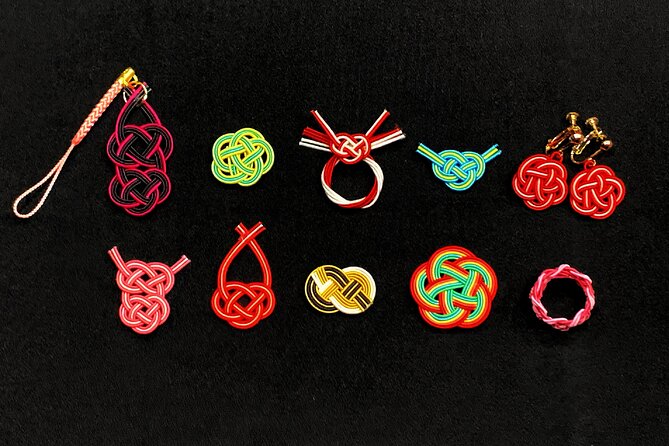
- Mizuhiki crafting in Asakusa Tokyo has a rich history and cultural significance.
- Traditional techniques use symbolic designs representing luck, unity, and heritage.
- Mizuhiki materials and designs reflect a fusion of tradition and modernity.
- Workshops provide opportunities to learn about Mizuhiki’s art, history, and techniques.
Here's some other great tours and experiences nearby we think you'll like.
History of Mizuhiki Crafting
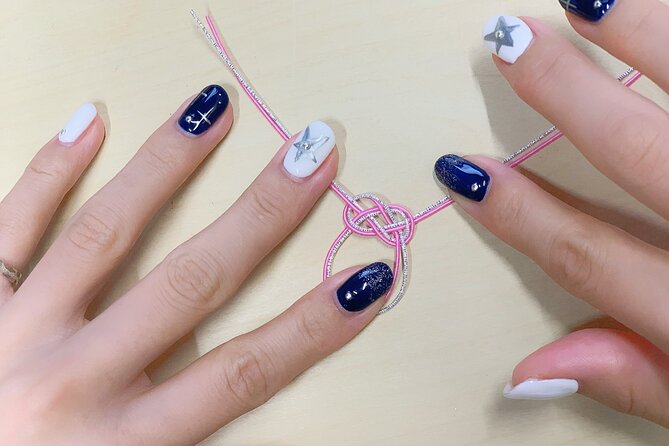
Crafting Mizuhiki in Asakusa Tokyo has a rich history dating back centuries, showcasing intricate designs and traditional Japanese artistry.
Mizuhiki’s cultural origins can be traced to the practice of using twisted rice stalks to adorn gifts, symbolizing good luck and well wishes.
Over time, Mizuhiki evolved into an art form, with artisans meticulously crafting delicate cords in various colors and patterns.
While rooted in tradition, Mizuhiki has found modern applications beyond gift wrapping, such as decorative items, jewelry, and even fashion accessories.
Today, visitors can participate in workshops to learn the art of Mizuhiki crafting, seeing a centuries-old tradition that continues to captivate people with its beauty and cultural significance.
Significance of Mizuhiki in Asakusa
With its deep cultural roots and artistic versatility, Mizuhiki holds a significant place in the vibrant community of Asakusa. This traditional Japanese art form isn’t only a symbol of cultural significance but also a reflection of the community’s heritage and values.
Mizuhiki is intricately woven into various aspects of life in Asakusa, from ceremonial events to everyday practices, showcasing its enduring relevance. Beyond its traditional uses, Mizuhiki has found modern applications in contemporary art, fashion, and design, blending the old with the new to create innovative pieces that resonate with both locals and visitors.
The enduring presence of Mizuhiki in Asakusa highlights its adaptability and continued relevance in today’s ever-evolving world.
Traditional Techniques Used in Mizuhiki

Traditional Mizuhiki techniques showcase a masterful intertwining of threads that have been honed through generations, embodying the rich heritage of craftsmanship in Asakusa. Mizuhiki holds deep cultural significance in Japan, with each knot and design carrying symbolic meanings. From representing good luck and prosperity to signifying unity and bonds in relationships, Mizuhiki’s symbolism is woven into various aspects of Japanese culture and traditions. While rooted in tradition, Mizuhiki has also evolved to embrace modern applications and trends, expanding its presence beyond traditional ceremonies to include fashion accessories, home decor, and even contemporary art pieces. The fusion of tradition and modernity in Mizuhiki crafting reflects the adaptability and timelessness of this ancient art form.
| Symbolism | Cultural Significance | Modern Applications | Trends |
|---|---|---|---|
| Good luck | Prosperity | Fashion accessories | Fusion |
| Unity | Relationship bonds | Home decor | Adaptability |
| Tradition | Heritage | Contemporary art | Timelessness |
Materials Required for Mizuhiki Crafting
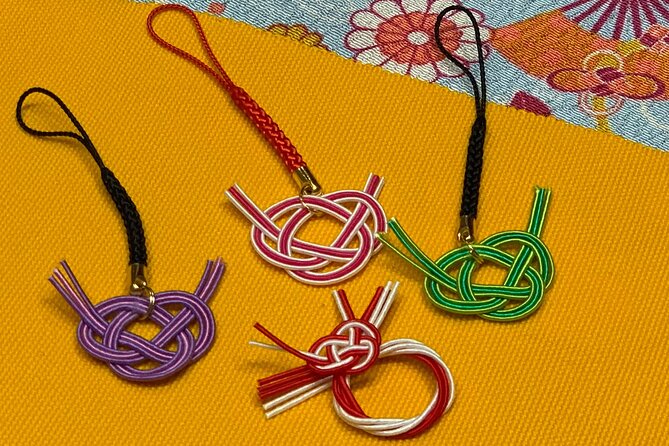
When creating Mizuhiki crafts, gather essential materials like colorful cords, scissors, and a sturdy base to start crafting intricate designs. Mizuhiki crafting tools are simple yet crucial for creating beautiful pieces. Color symbolism plays a significant role in Mizuhiki art, where each color holds a unique meaning. Here are the key materials needed for Mizuhiki crafting:
- Colorful cords: These cords come in various hues, each representing different emotions or occasions.
- Scissors: A good pair of sharp scissors is essential for cutting and shaping the Mizuhiki cords effectively.
- Sturdy base: Having a solid foundation to work on ensures that your Mizuhiki creation remains stable and well-structured.
Step-by-Step Guide to Making Mizuhiki

To start creating your own beautiful Mizuhiki artwork, gather your colorful cords, scissors, and a sturdy base for crafting intricate designs.
Mizuhiki color symbolism plays a significant role in the art form, with each color representing different meanings like happiness, love, or good luck. Begin by choosing the colors that resonate with the message you wish to convey through your creation.
As you start crafting, keep in mind Mizuhiki’s modern applications, which extend beyond traditional ceremonies to include contemporary art pieces, jewelry, and decorative items.
Embrace your creativity and experiment with various techniques to bring your Mizuhiki artwork to life, whether you’re following traditional patterns or creating your unique designs.
Popular Mizuhiki Designs

Explore a variety of captivating Mizuhiki designs that blend traditional Japanese artistry with modern creativity. Mizuhiki, known for its intricate patterns and symbolic meanings, reflects a deep cultural significance. Here are some insights into popular Mizuhiki designs:
-
Mizuhiki Color Meanings: Each color in Mizuhiki holds a specific symbolism, such as red for happiness, white for purity, and gold for prosperity. Understanding these color meanings adds depth to the art form.
-
Cultural Significance: Mizuhiki’s roots in Japanese culture make it a cherished tradition for weddings, New Year celebrations, and gifts. Its presence in various ceremonies showcases its enduring cultural importance.
-
Mizuhiki Modern Applications: Today, Mizuhiki isn’t only used in traditional settings but has also found its way into modern creative trends. From fashion accessories to interior décor, Mizuhiki continues to evolve and inspire new artistic expressions.
Mizuhiki Crafting Workshops in Asakusa
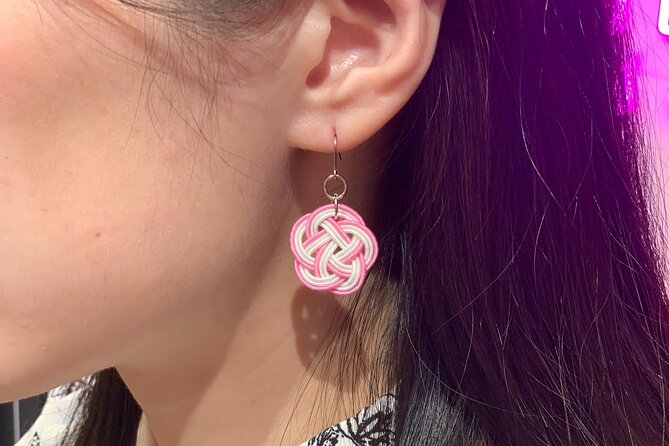
Visitors to Asakusa can enjoy the art of Mizuhiki crafting through engaging workshops that offer a hands-on experience in creating intricate designs. These workshops not only allow participants to learn the traditional Japanese art form but also to explore the creative applications of Mizuhiki in modern contexts.
By joining these sessions, you can establish cultural connections through the shared experience of crafting Mizuhiki alongside local artisans. The workshops are budget-friendly and provide an excellent opportunity to explore a unique aspect of Japanese culture.
Participants can expect to walk away with not only newfound skills but also a deeper appreciation for the craftsmanship and significance of Mizuhiki in Japanese traditions.
Tips for Purchasing Authentic Mizuhiki
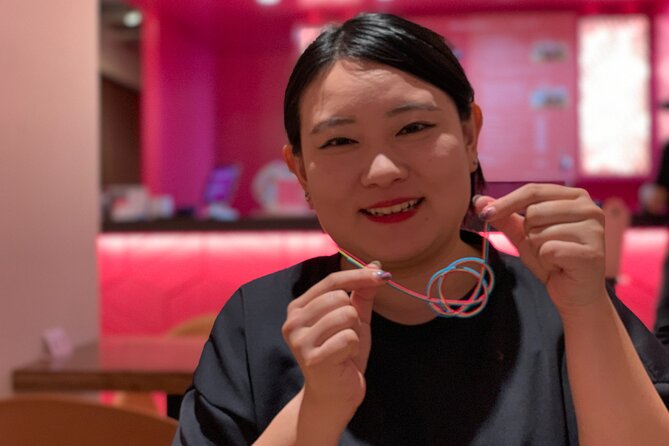
For those seeking to purchase authentic Mizuhiki, consider shopping at traditional craft stores renowned for their high-quality selection.
When looking to buy Mizuhiki, consider the following tips:
- Craftsmanship: Look for Mizuhiki crafted by skilled artisans who pay attention to detail.
- Authenticity: Ensure the Mizuhiki you’re purchasing is made from traditional materials to guarantee its authenticity.
- Selection: Explore a variety of colors and designs to find the perfect Mizuhiki for your needs.
Frequently Asked Questions
Can Children Participate in Mizuhiki Crafting Workshops in Asakusa Tokyo?
Children can actively participate in Mizuhiki crafting workshops in Asakusa Tokyo. The workshops offer an engaging and budget-friendly experience for young participants. Availability is limited, so booking in advance is recommended to secure a spot.
Are There Any Special Events or Festivals in Asakusa Where Mizuhiki Crafting Is Showcased?
Mizuhiki demonstrations are often featured at Japanese festivals in Asakusa. Visitors can witness the intricate Mizuhiki art crafted using traditional techniques. These events offer a unique opportunity to experience the beauty and cultural significance of this ancient craft.
How Long Does It Typically Take to Complete a Mizuhiki Craft Project?
Typically, completing a Mizuhiki craft project involves good time management and mastering various crafting techniques. The duration varies based on skill level and intricacy of the design. Basic projects may take around 30 minutes to an hour to finish.
Are There Any Cultural Customs or Traditions Associated With Giving Mizuhiki Crafts as Gifts?
When giving Mizuhiki crafts as gifts, there is cultural significance in Japan. It’s a symbolic gesture of good luck, prosperity, and strong relationships. The intricate designs reflect artistic expression, making each piece a heartfelt and meaningful present.
Is Mizuhiki Crafting a Popular Activity for Tourists Visiting Asakusa Tokyo?
Mizuhiki crafting is a popular activity for travelers in Asakusa Tokyo. It offers a DIY experience where visitors can create cultural souvenirs and traditional art. Participants can make handmade gifts, adding a personal touch to their travel memories.
Final Words
Unleash your creativity and learn about the world of Mizuhiki crafting in Asakusa, Tokyo. Discover the history, techniques, and significance of this traditional Japanese art form while creating beautiful designs with expert guidance.
Whether you’re a seasoned traveler or a novice explorer, a Mizuhiki crafting workshop in Asakusa is a budget-friendly and enriching experience not to be missed. Book your session today and embark on a cultural journey like no other!
